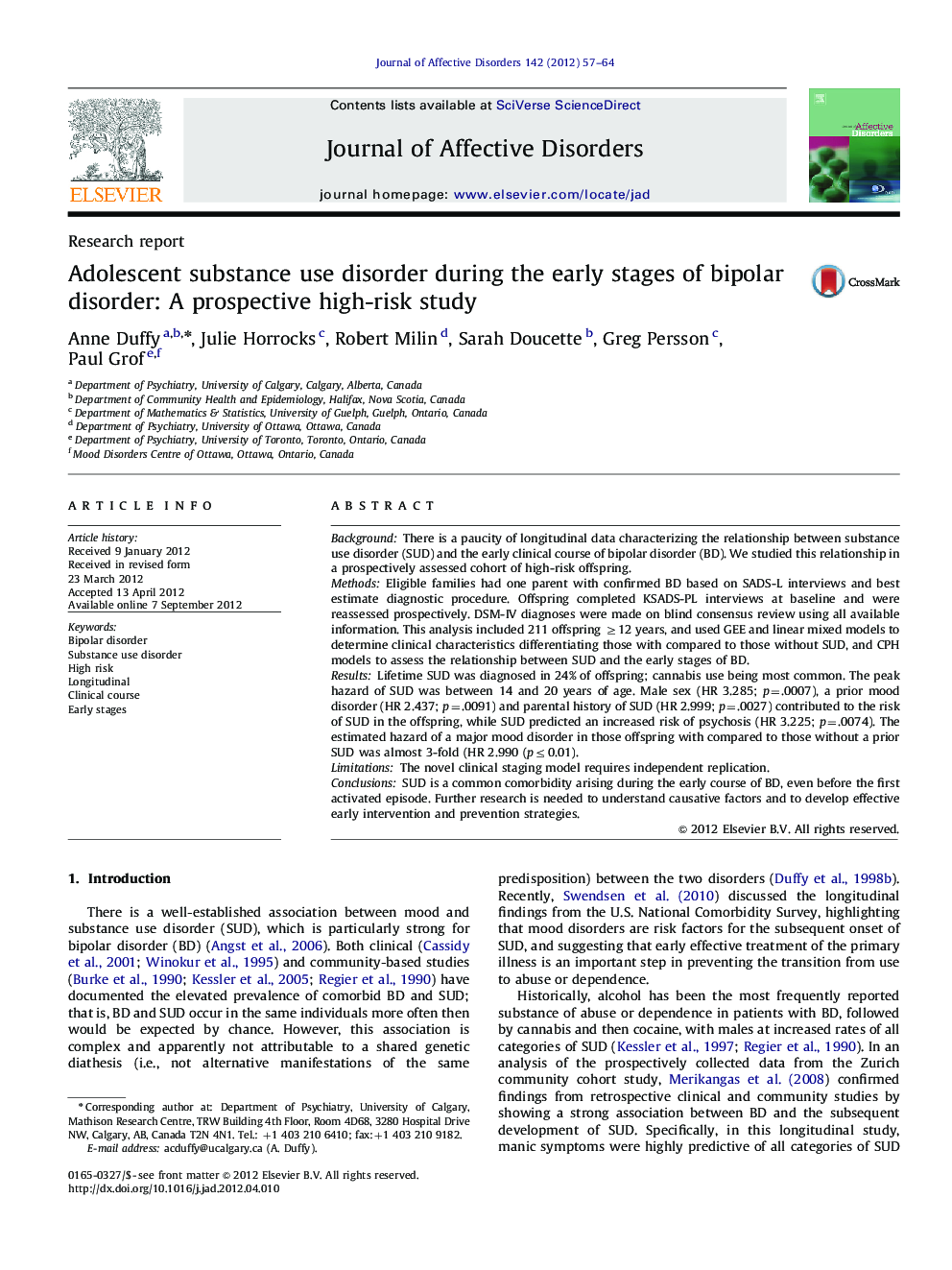| Article ID | Journal | Published Year | Pages | File Type |
|---|---|---|---|---|
| 4186304 | Journal of Affective Disorders | 2012 | 8 Pages |
BackgroundThere is a paucity of longitudinal data characterizing the relationship between substance use disorder (SUD) and the early clinical course of bipolar disorder (BD). We studied this relationship in a prospectively assessed cohort of high-risk offspring.MethodsEligible families had one parent with confirmed BD based on SADS-L interviews and best estimate diagnostic procedure. Offspring completed KSADS-PL interviews at baseline and were reassessed prospectively. DSM-IV diagnoses were made on blind consensus review using all available information. This analysis included 211 offspring ≥12 years, and used GEE and linear mixed models to determine clinical characteristics differentiating those with compared to those without SUD, and CPH models to assess the relationship between SUD and the early stages of BD.ResultsLifetime SUD was diagnosed in 24% of offspring; cannabis use being most common. The peak hazard of SUD was between 14 and 20 years of age. Male sex (HR 3.285; p=.0007), a prior mood disorder (HR 2.437; p=.0091) and parental history of SUD (HR 2.999; p=.0027) contributed to the risk of SUD in the offspring, while SUD predicted an increased risk of psychosis (HR 3.225; p=.0074). The estimated hazard of a major mood disorder in those offspring with compared to those without a prior SUD was almost 3-fold (HR 2.990 (p≤0.01).LimitationsThe novel clinical staging model requires independent replication.ConclusionsSUD is a common comorbidity arising during the early course of BD, even before the first activated episode. Further research is needed to understand causative factors and to develop effective early intervention and prevention strategies.
